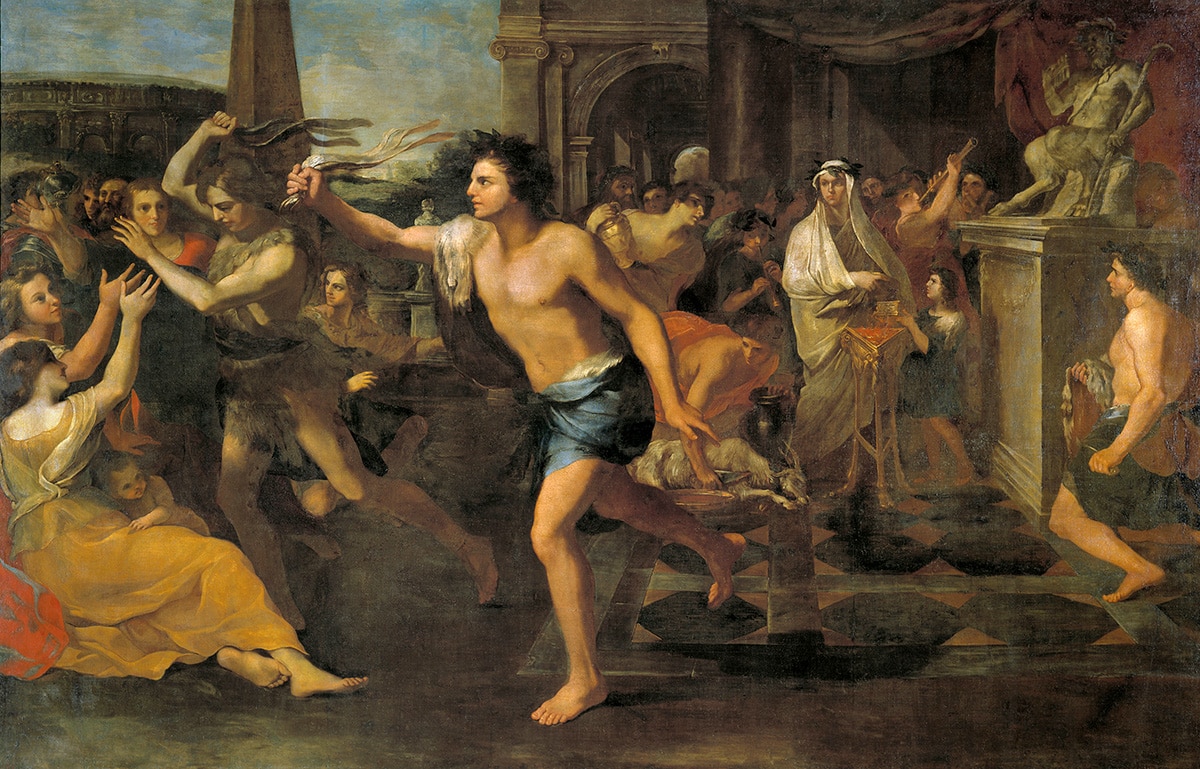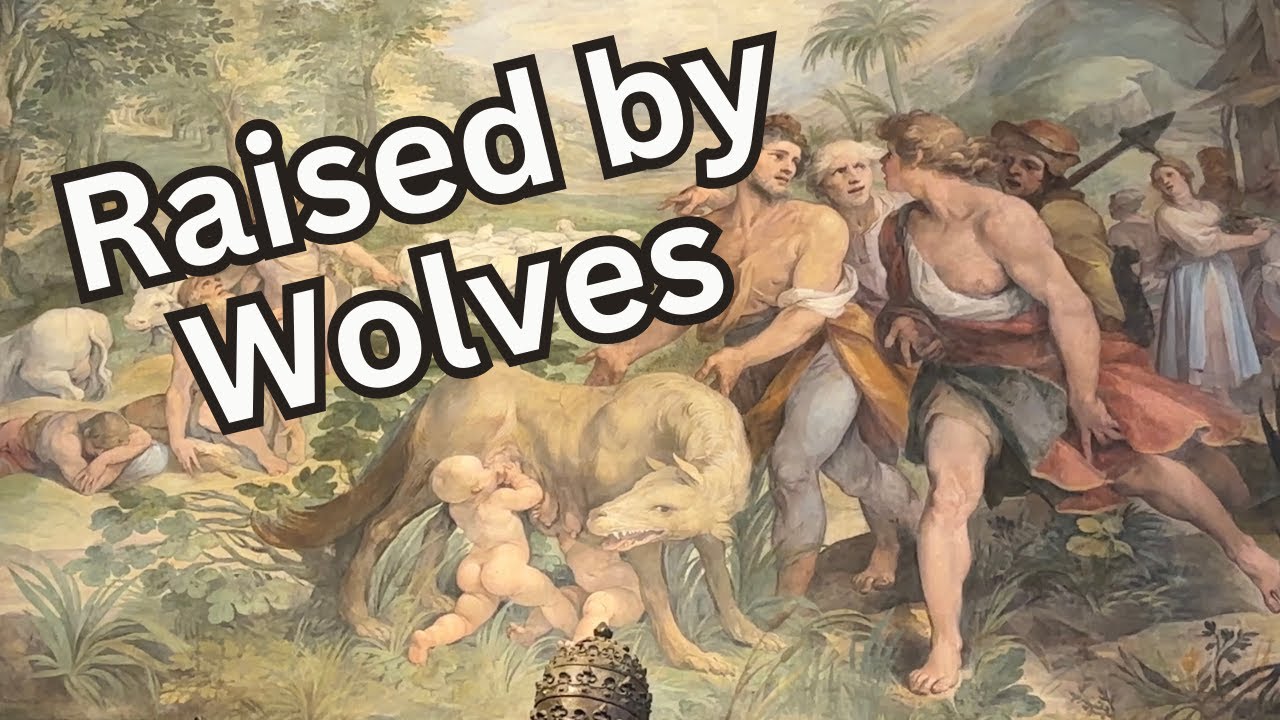Start with our video overview:
Lupercalia was an important religious festival in Ancient Rome that took place on the 15th of February each year. This date was also shared with Februa, a festival dedicated to purification. Lupercalia fell within Parentalia as well, a nine-day festival which honored family ancestors.
Like Februa and Parentalia, Lupercalia was associated with spiritual cleansing and honoring the past. The festival centered around the she-wolf, or lupa, who suckled Romulus and Remus (the legendary founders of Rome) when they were boys. Rituals took place in the Lupercal, a cave on the Palatine Hill, where the she-wolf was found nursing the two brothers. Participants in the festival were known as the Luperci and were split into two groups: the Fabiani and the Quinctiliani.
During the festival, a goat was sacrificed in the Lupercal, and its blood was wiped on a knife. This knife was then used to spread blood on the foreheads of the Luperci. During this part of the ceremony, participants were expected to laugh, which served as an acknowledgment of their purification. The skin of the sacrificial goat was fashioned into whips and given to the Luperci, who ran around the city naked whipping people they came across. This started as a means of purification, but it soon became associated with fertility, as being hit with the whip was believed to induce pregnancy in women. The running ended when the Luperci reached the rostra, or speaker’s platform, in the Forum.
The most well-known Lupercalia was held in 44 BCE, as Julius Caesar was deeply involved. He added a third group to the Luperci called the Iuliani, rather blatantly named after himself. Mark Antony, his co-consul and political ally, participated in the ritual while Caesar sat on the rostra. After conducting the sacrifice and running through the streets, Mark Antony tried to present a crown to Caesar. To the crowd’s relief, he rejected Antony’s offer. This episode is seen by many historians as a sort of ancient publicity sunt, deliberately staged to assuage concerns that Caesar wanted to become king. Unfortunately for Caesar, this gesture was not enough to appease the conspirators who would assassinate him exactly one month later.
Lupercalia proved to be a durable part of Roman culture, as it outlived even the Western Roman Empire itself. Lupercalia finally met its end during the last years of the 5th century CE, when it was outlawed by Pope Gelasius I. Contrary to popular belief, the festival has nothing to do with Valentine’s Day, which originated as a feast day for a Christian martyr.
Bibliography
- Green, W. M. (1931). The Lupercalia in the Fifth Century. Classical Philology,26(1), 60–69. http://www.jstor.org/stable/264682
- Miller, John F. (2010). Festivals, Roman. In The Oxford Encyclopedia of Ancient Greece and Rome (1st ed.). doi: 10.1093/acref/9780195170726.001.0001
- Moon, Kat. (February 19, 2019). The Truth About the Connection Between Valentine’s Day and the Ancient Roman Festival of Lupercalia. Time. https://time.com/5527259/valentines-day-lupercalia/.
- Schmitz, Leonhard. (1875). Lupercalia. In the Dictionary of Greek and Roman Antiquities (p.718). Retrieved from: https://penelope.uchicago.edu/Thayer/E/Roman/Texts/secondary /SMIGRA*/Lupercalia.html
This content is brought to you by The American Institute for Roman Culture, a 501(C)3 US Non-Profit Organization.
Please support our mission to aid learning and understanding of ancient Rome through free-to-access content by donating today.
Cite This Page
Cite this page as: Darius Arya, The American Institute for Roman Culture, Lupercalia” Ancient Rome Live. Last modified 07/27/2024. https://ancientromelive.org/lupercalia/
License
Created by The American Institute of Roman Culture, published on 07/27/2024 under the following license: Creative Commons: Attribution-NonCommercial-ShareAlike. This license lets others remix, tweak, and build upon this content non-commercially, as long as they credit the author and license their new creations under the identical terms. Please note that content linked from this page may have different licensing terms.



